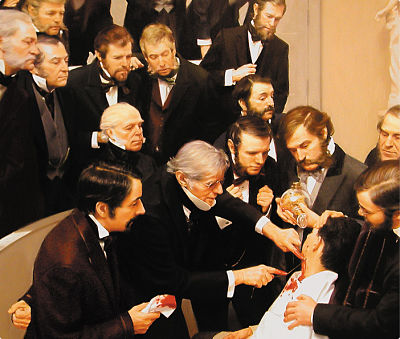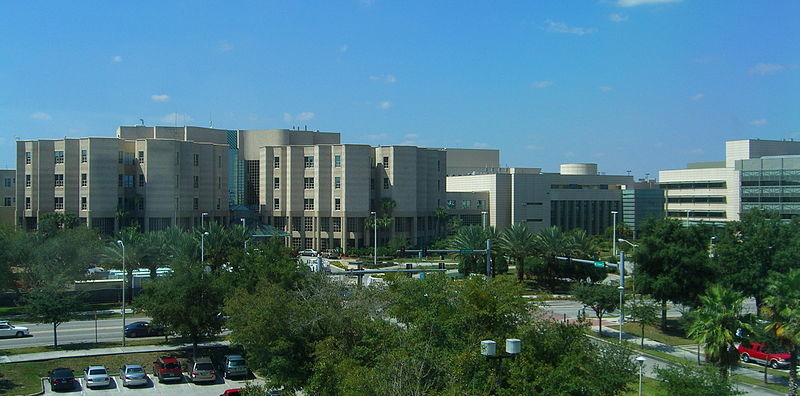Scientists are working every day to discover a cure for mesothelioma. I have always been optimistic that science will prevail over this terrible disease one day. My optimism was invigorated after recently hearing the story of Massachusetts General Hospital’s Ether Dome and one of the most significant advances in medical history – the use of anesthetic to alleviate the excruciating pain of surgery. The development of ether as an anesthesia over 150 years ago at the Ether Dome revolutionized medical treatment. There is no reason that we cannot experience a similarly momentous event in the treatment of mesothelioma.
Massachusetts General Hospital’s Asbestos Medicine Conference
I knew that the use of anesthetia was a revolutionary development in medical history. But my knowledge was greatly expanded after several of my firm’s members returned from the Massachusetts General Hospital Department of Harvard Medical School’s annual Asbestos Medicine Conference. This conference brings together the world’s foremost scientists and researchers on asbestos-related diseases. During two days of presentations, these experts shared their extraordinary knowledge, including the most up-to-date and cutting-edge research.
Over the years, I have been fortunate to have my firm’s attorneys, paralegals, and registered medical-legal assistant regularly attend the conference. This year Todd Eddins, a trial lawyer, and Cynthia Davis, our RN medical-legal assistant attended the conference along with two other members of my firm. I believe that it is critical to stay abreast of all the recent developments in asbestos medicine and mesothelioma development, so I am always eager to hear what my team learns from many of the best scientists in the world. This year was no different. But it was particularly interesting for me to listen to my firm members’ enthusiastic description of a guided tour of the Ether Dome and its compelling story.
The Ether Dome
The Ether Dome is located in the Bulfinch Building in Boston’s Massachusetts General Hospital. It was situated just a few hallways and an elevator ride away from the meeting theater of the Asbestos Medicine Conference. During lunchtime, members of my team were delighted to have world-renowned pathologist Dr. Eugene Mark of Massachusetts General and Harvard Medical School, serve as tour guide. Dr. Mark showed them the Ether Dome, and gave a guided tour through medical history.
Although the Ether Dome served as the hospital’s operating room following the opening of Massachusetts General in 1821, it was not called the Ether Dome until 1846. This was the year that medical history was made when William Morton, a Boston dentist, performed the first use of an anesthetic during a public surgery. As a result of that momentous event, the Ether Dome is a registered National Historic site.
The First Use of Anesthesia During Surgery
 Prior to the advent of anesthesia, surgery was a terrifying event. Alcohol or opium was used to numb patients, but provided little relief. Patients often refused surgical treatment due to the excruciating pain. Doctors had to operate quickly, often with fatal consequences, because most patients went into shock from the pain. Those who survived surgery took weeks and months to recuperate. In 1846, everything changed.
Prior to the advent of anesthesia, surgery was a terrifying event. Alcohol or opium was used to numb patients, but provided little relief. Patients often refused surgical treatment due to the excruciating pain. Doctors had to operate quickly, often with fatal consequences, because most patients went into shock from the pain. Those who survived surgery took weeks and months to recuperate. In 1846, everything changed.
On October 16, 1846, a man named Edward Gilbert Abbott had a tumor on his neck surgically removed. Mass General’s chief surgeon Dr. John Collins Warren undertook the normal preparations to remove the tumor. But this surgery was like no other. To an assembled audience of the leading physicians of the day, William Morton administered ether to Mr. Abbott. Dr. Warren, recognized as the finest surgeon of his time, then removed the tumor. The audience did not hear the usual screams of agony associated with surgery. The surgery was successful and Abbott experienced no pain. He reported that the invasive surgery merely felt like his neck had been scratched. The event was celebrated in the newspapers and medical journals of the time.
Historical Medical Advancements Provide Hope Today
Ether’s use revolutionized hospital operating rooms around the world. Surgery was no longer feared as it had been for hundreds of years. Lives were saved.
When I reflect on what my team and I learned about Massachusetts General Hospital’s Ether Dome, I am heartened to think that there will one day be a similar breakthrough moment where we find a cure for mesothelioma. The history of medicine is filled with small advances and large ones, like the use of anesthesia. With patience, hard work, and will power, I am optimistic that we will eventually have a day even bigger than October 16, 1846. We will have a celebrated day where mesothelioma no longer devastates families.
For more information about the medical research being done on mesothelioma today, visit our Mesothelioma Publications and Articles.









